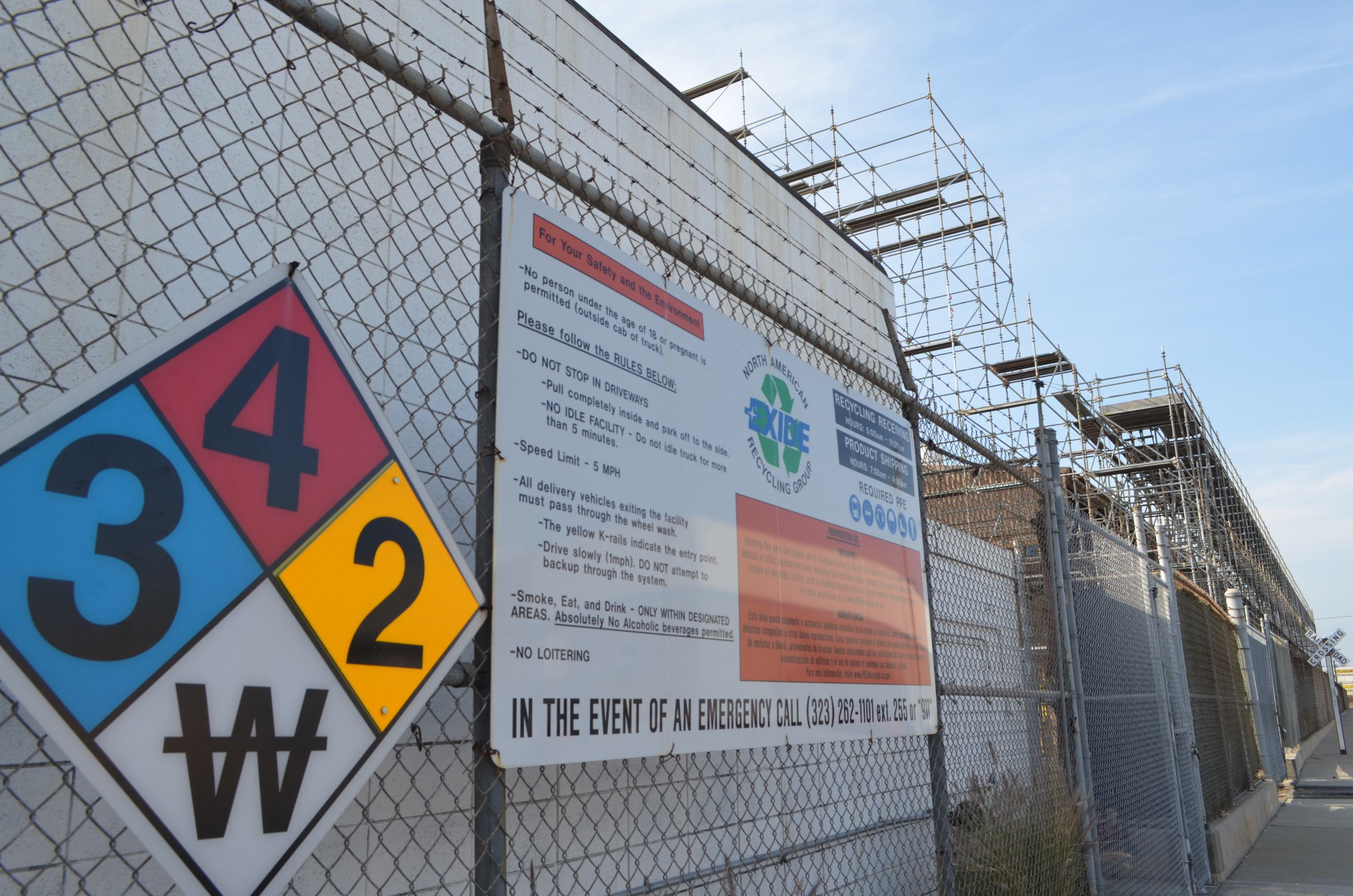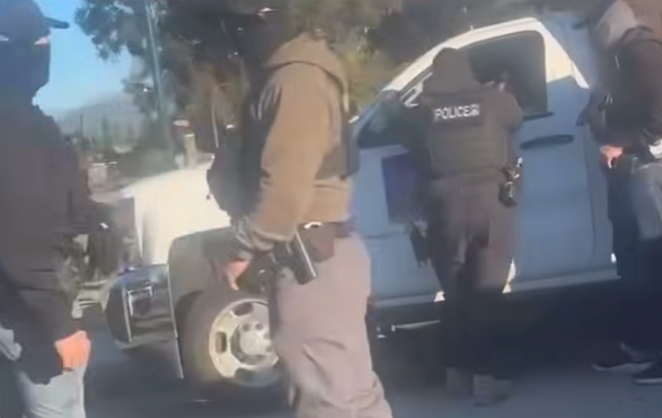[dropcap size=big]L[/dropcap]egislators, officials and community leaders gathered Tuesday morning at the Resurrection Church in Boyle Heights, East Los Angeles, to decry Exide Technologies’ proposed bankruptcy settlement agreement that they say will allow the company to walk away from potentially hundreds of millions of dollars of cleanup costs from lead and other toxic contamination incurred in Vernon at its former lead battery recycling facility and in the surrounding community.
This article was produced by Capital & Main which is an award-winning publication that reports from California on economic, political, and social issues. L.A. Taco is co-publishing this article.
“The worst of corporate polluters, they’re just trying to walk away with whatever they can,” said Assemblymember Miguel Santiago, of Exide and the proposed settlement agreement which enjoys approval from the Department of Justice (DOJ).
The eight-day public comment period on the agreement ended, and a court hearing is scheduled for next week. Santiago is one of seven legislators to sign a letter asking U.S. Attorney General William Barr to extend the comment period for 60 days on the agreement, and for a public hearing. “We implore the Department of Justice to oppose Exide’s proposed abandonment of the Vernon facility,” the letter states.
“All we ask is that we have some justice here and we hold people accountable,” said Assemblymember Cristina Garcia, another letter signatory, at Tuesday’s press conference.
Indeed, many observers tell Capital & Main that the proposed agreement as another instance of the Trump administration reflexively siding with industry. A hearing extension, however, could push a decision on the proposed agreement until after the general election – and into the hands of a far different DOJ. “It does make a difference who’s in the White House,” said U.S. Representative, Jimmy Gomez. “It does make a difference who the attorney general is.”
Also read: There’s Lead in the Baby Teeth of Children Living Near the Southeast L.A. Exide Battery Plant
Tuesday’s news conference signals the latest attempt by the state to recover cleanup costs from Exide. Last May, Exide filed for Chapter 11 bankruptcy for the third time in 20 years. Then, in September, the DOJ executed the proposed consent decree and settlement agreement with Exide, which officials say affords the company permission to abandon various cleanup commitments at its former plant, including a court-ordered study to determine the full extent of the pollution it created. This proposed agreement runs counter to an Obama-era non-prosecution agreement the U.S. Attorney’s Office negotiated with Exide in 2015, which provided that the company would avoid federal prosecution if it abided by certain obligations as a responsible party for the contamination. Officials estimate it could cost as much as $100 million to remediate the site, of which only a “small portion” is covered by money Exide has already provided, according to the letter to Barr.
Similarly, the task to clean the neighborhoods around the former plant itself is only partially complete. For decades the Vernon site spewed a toxic cocktail of lead, arsenic, and other contaminants into communities that are among the most environmentally burdened in the state. As part of the largest such cleanup in the state’s history—one overseen by the Department of Toxic Substances Control (DTSC)—the ongoing project to remediate thousands of homes around the plant has been beset with confusion, shifting deadlines, and massive budget overruns, with California taxpayers already fronting north of $250 million.
Some question whether regulators and state officials have missed vital opportunities to secure recovery costs from Exide. “The state could have done, and needs to do, so much more,” warned Jane Williams, executive director of California Communities Against Toxics and a member of the DTSC-supported Exide Advisory Group, after the press conference wrapped.







